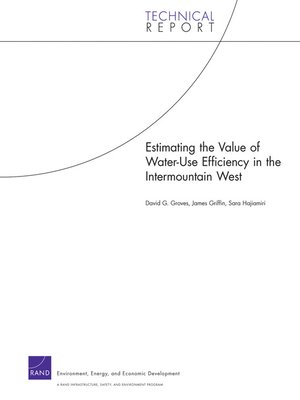
Sign up to save your library
With an OverDrive account, you can save your favorite libraries for at-a-glance information about availability. Find out more about OverDrive accounts.
Find this title in Libby, the library reading app by OverDrive.



Search for a digital library with this title
Title found at these libraries:
| Library Name | Distance |
|---|---|
| Loading... |
Evaluating the cost-effectiveness of water-efficiency programs can be difficult, because not all the benefits are easily quantified. This report presents an economic framework based on two tools from the California Urban Water Conservation Council to estimate the avoided costs and environmental benefits of an agency's efficiency programs. The report evaluates the benefits of Denver Water efficiency programs and uses an exploratory modeling approach to accommodate the significant uncertainty in such estimations. The results of this study suggest that the inclusion of long-run avoided costs and environmental benefits is critical to fully recognizing the value of water-use efficiency programs. The authors find that evaluating only the short-run avoided costs leads to the conclusion that many water-efficiency projects already a part of Denver Water?s 10-year conservation plan are not cost-effective. When long-run avoided costs and environmental and recreational benefits were factored in, all but two Denver Water programs were estimated to be cost-effective. The timing of projected water savings from efficiency programs is also critical. Water savings from programs that concentrate savings during summer months, when water is scarcer, should be valued higher than saving from programs that lead to more uniform water savings throughout the year, because these water savings reduce peak water needs.







